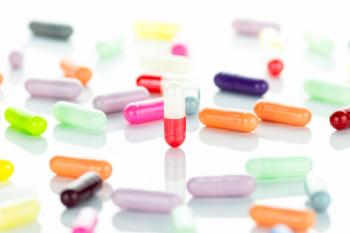
What's the best hang-time for lipid infusions?
New guidelines urge caution over hang time for lipid infusions to prevent catheter-related infections
HEALTH-SYSTEM EDITION
CLINICAL PRACTICE
What's the best hang-time for lipid infusions?
Does hang-time truly make a difference in preventing catheter-related infections when intravenous lipid emulsions (IVLEs) are being administered? The answer is an absolute Yes, according to Gordon S. Sacks, Pharm.D., BCNSP, clinical associate professor in the pharmacy practice division at the University of Wisconsin in Madison. He has conducted a vast amount of research on the subject and recommends a 3-in-1 formulation as the best defense against catheter-related infections.
IVLEs, a vital source of calories for patients requiring parenteral nutrition (PN), are administered in the following methods:
as a separate infusion
with other PN components
as an added component of the total parenteral nutrition (TPN) admixture in a single-infusion container, known as a 3-in-1 or total nutrient admixture (TNA) formulation.
The risk of infection is greatly influenced by the method of IV administration, Sacks explained to pharmacists at the recent ASHP 37th Annual Midyear Clinical meeting in Atlanta. The use of the 3-in-1 approach reduces manipulation of the central venous catheter and does not support the growth of microorganisms, as opposed to a separate infusion, which appears to foster the growth of a variety of common nosocomial pathogens, noted Sacks.
The Centers for Disease Control & Prevention recently released guidelines on the infusion of lipids. The guidelines urge health professionals to complete infusion of a 3-in-1 within 24 hours; to complete infusion of IVLEs alone within 12 hours; and, if volume considerations require more time, to complete the infusion within 24 hours.
However, Sacks noted there has been some confusion over the CDC 12-hour recommendation because the infusion time can be extended to 24 hours if the lipids are separated. "When lipids are infused separately outside the TPN bag, that is when the potential for microbial growth is present. That 12 hours should really be the longest period that lipids are infused outside of the TPN bag separately," he said.
"Although CDC recommends a 12-hour hang-time for the complete infusion of IVLEs alone, there is a corollary that if volume dictates, it is all right to infuse longer than 12 hours," Sacks noted. However, recent data suggest that administration sets for 3-in-1 infusions may be safe for up to 72 hours based upon the reduced microbial growth potential of these hypertonic and acidic infusions. But CDC has not yet addressed this new information.
These new data clearly show that "by putting the lipid into one container versus putting it in a separate infusion, a 3-in-1 does not support the growth of microorganisms," Sacks said.
The only case in which the 12-hour rule applies for complete infusion when lipids are removed from their original containers is as it relates to the sedative propofol. CDC states that if propofol is removed from the original manufacturer's container, the infusion should not be administered for longer than six hours. This is because this lipid-based agent has been found to be associated with bloodstream and surgical-site infections.
In fact, in 1995, CDC published findings that identified "unusual outbreaks" of infections associated with extrinsic contamination of propofol emulsion. The product had to be reformulated to include an antimicrobial additive that was approved by the Food & Drug Administration in 1996. The FDA-approved package insert for IV lipid-based propofol formulations states that both the alternative container and tubing should be discarded after six hours. This includes commercial formulations containing a preservative (e.g., ethylene-diamine tetra-acetic acid, or EDTA). However, because the addition of an antimicrobial additive does not protect against all potential pathogens, strict aseptic technique and compliance with CDC's original 12-hour hang-times is still required.
According to Sacks, in addition to the method of administration, there are several clinical factors that must be considered to provide safe IV therapy. The key considerations regarding IVLE administration and hang-time include risk of infection and the physicochemical stability of the final admixture.
In addition to the CDC IVLE hang-time guidelines, Sacks makes the following recommendations to minimize the risk of catheter-related infections:
IVLEs given alone in their original manufacturer's container (i.e., 100-, 200-, 250-, 500-ml glass bottles) should be infused within 12 hours.
IVLEs administered in an alternative container should be infused within six hours.
IVLEs administered as a component of 3-in-1 and accompanying administration set should be terminated within 24 hours of infusion.
Leah E. Perry
The author is a writer based in the Atlanta area.
Leah Perry. What's the best hang-time for lipid infusions?.
Drug Topics
2003;6:HSE17.
Newsletter
Pharmacy practice is always changing. Stay ahead of the curve with the Drug Topics newsletter and get the latest drug information, industry trends, and patient care tips.






































































































































